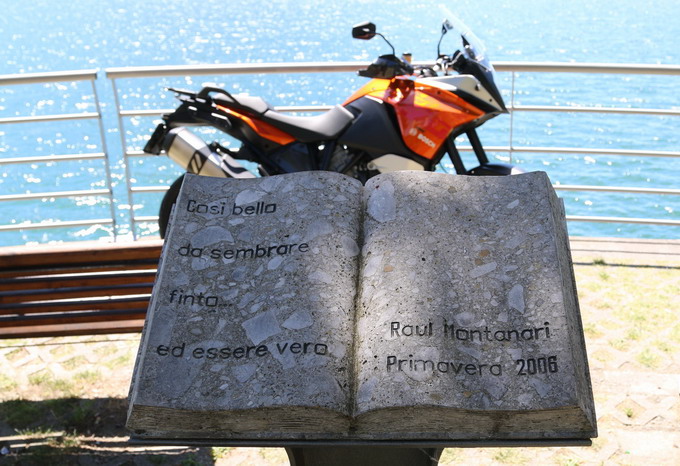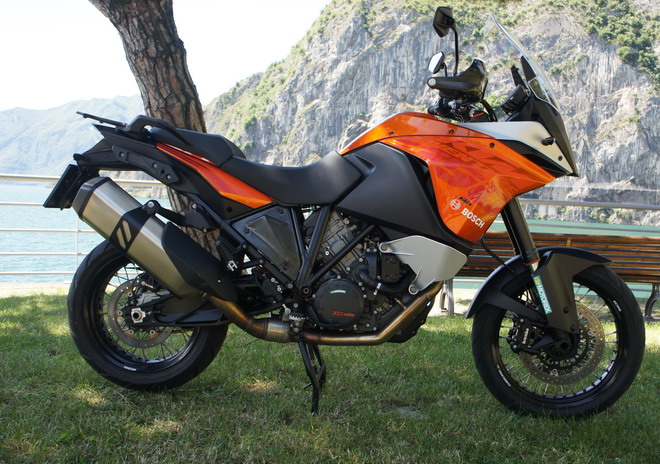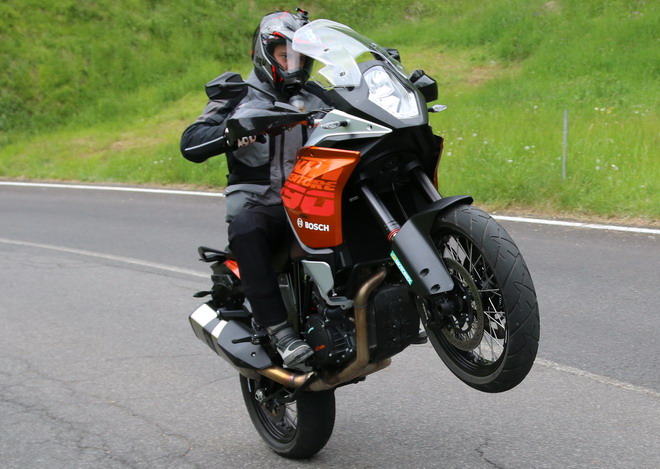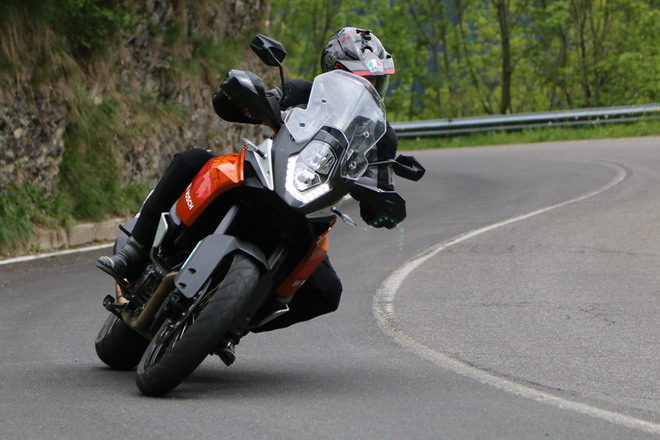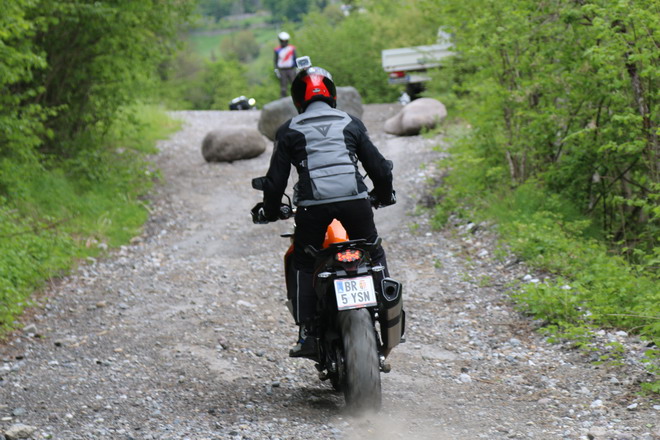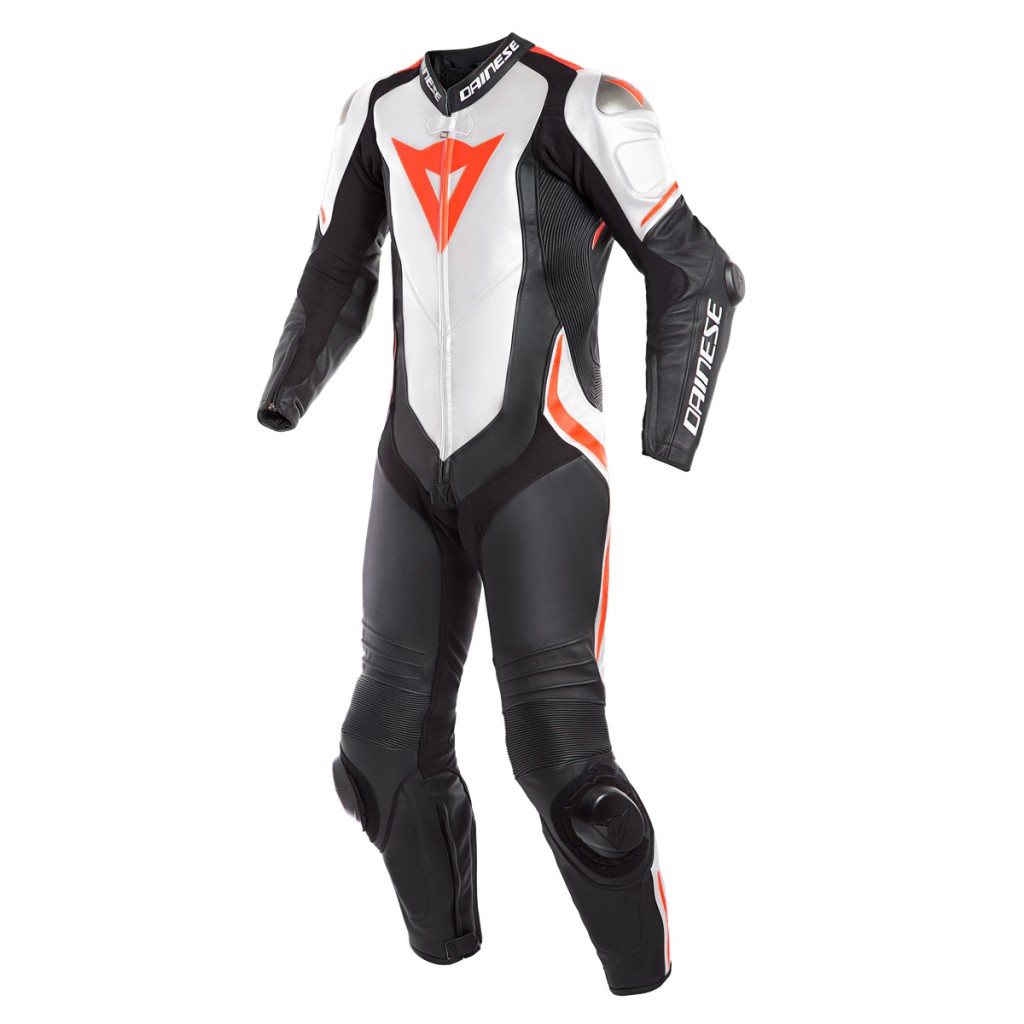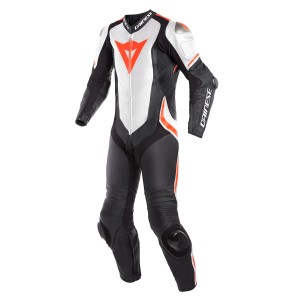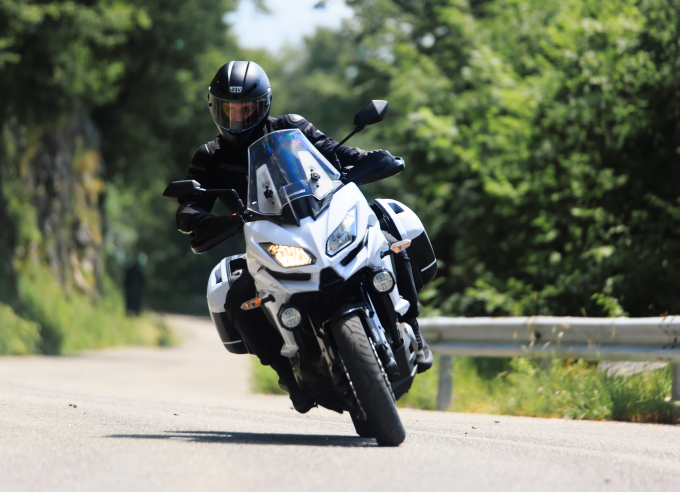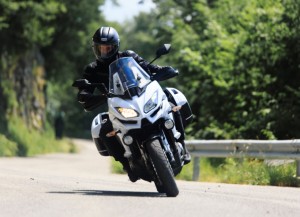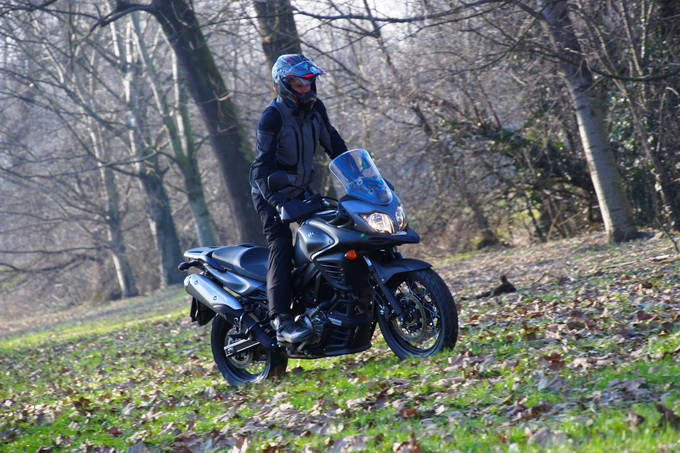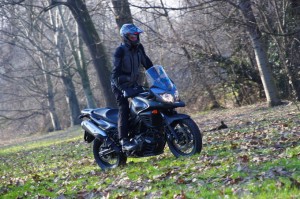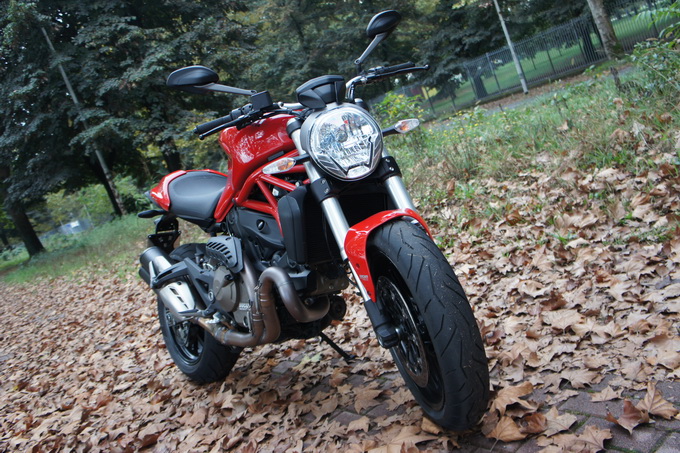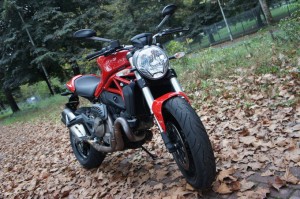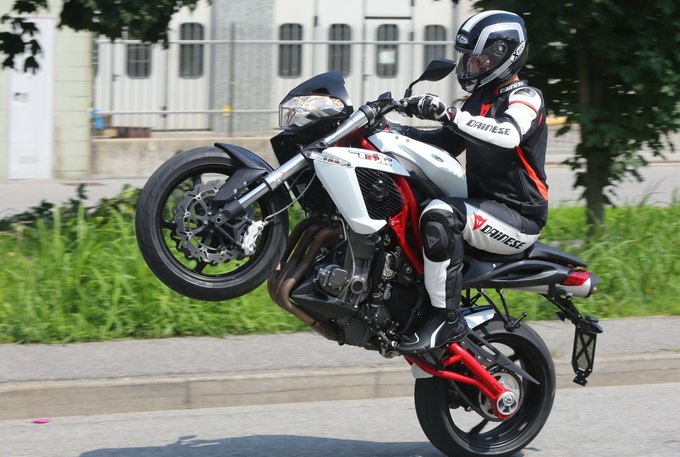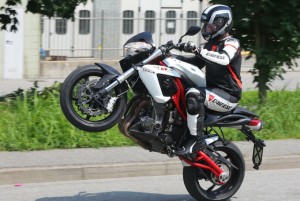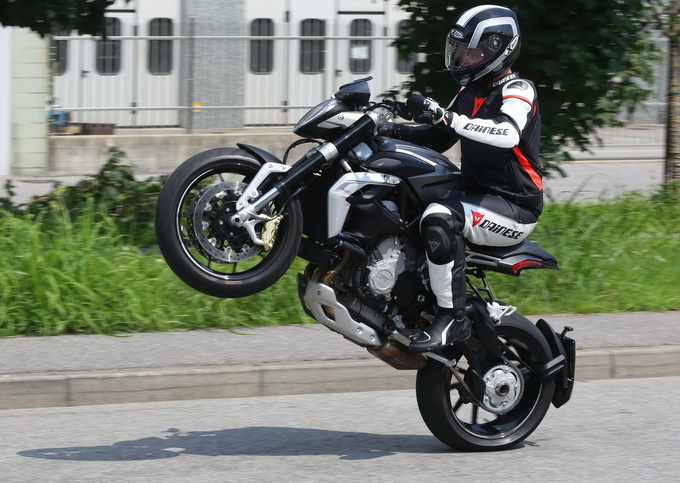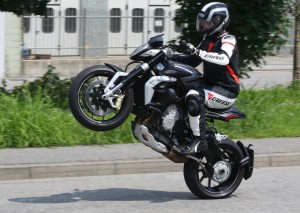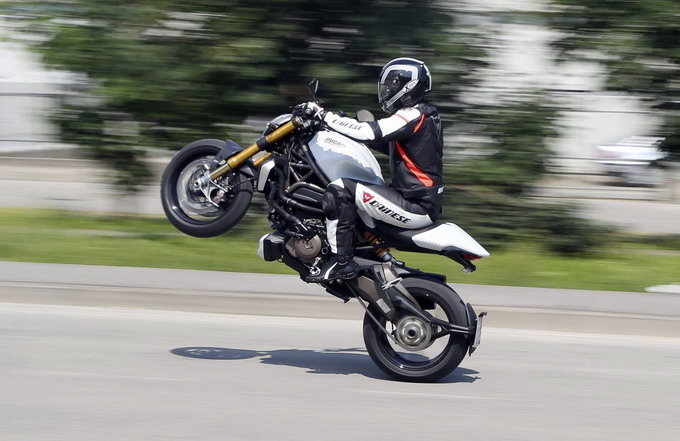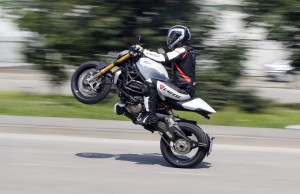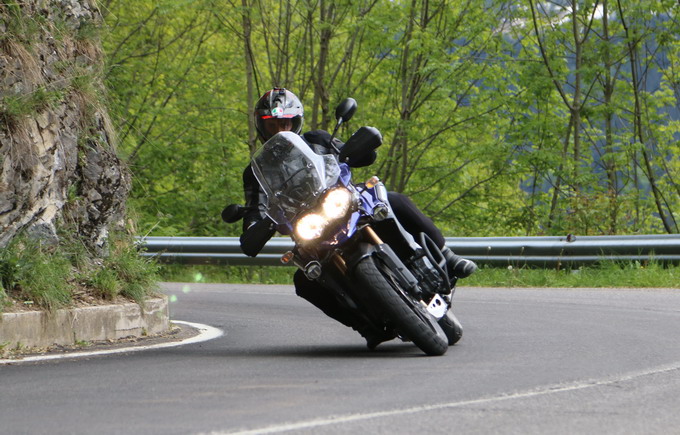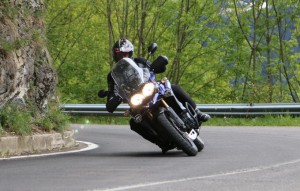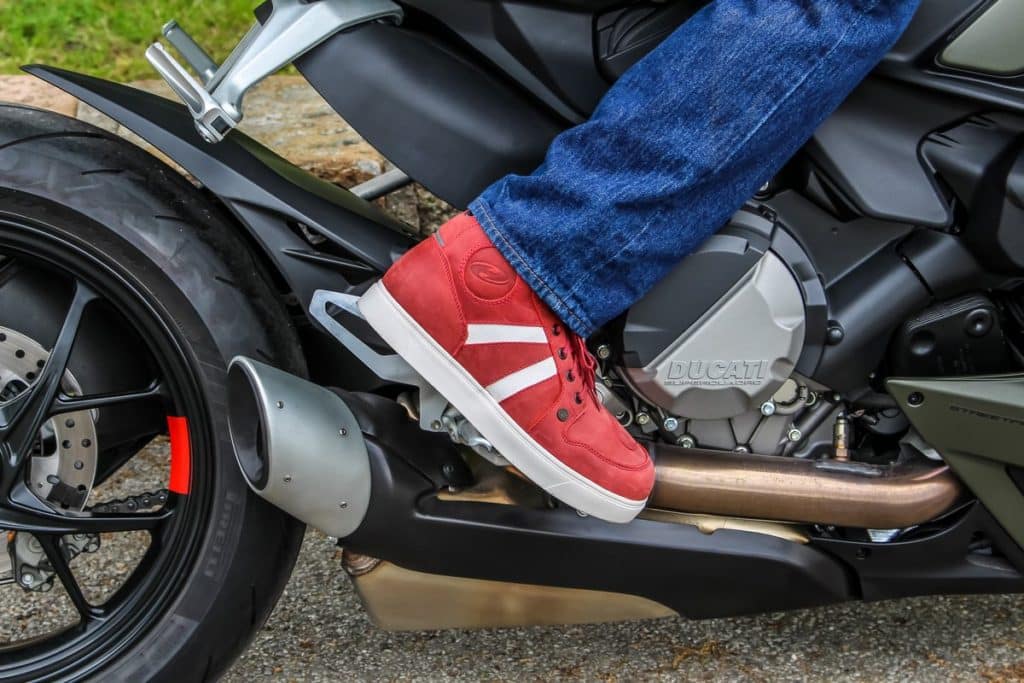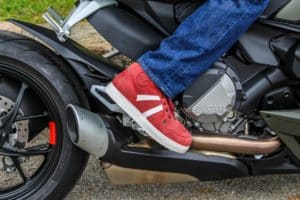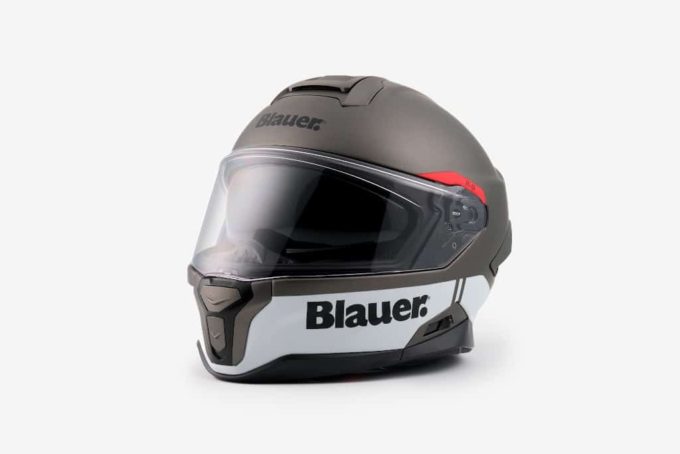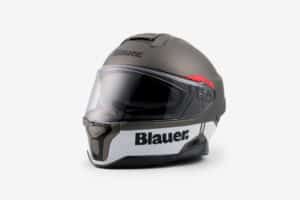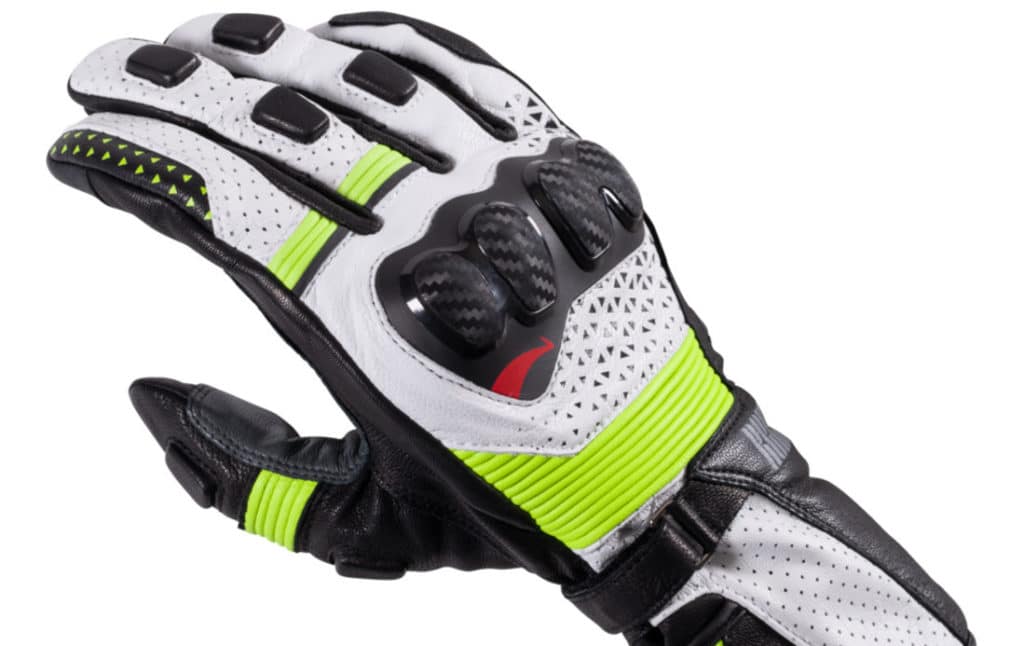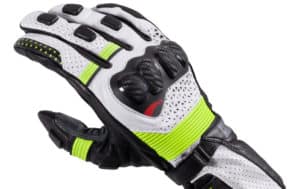KTM 1190 Adventure MSC – Road test 2014
Adrenaline to spare for the baddest maxi enduro on the market
The numbers are often not enough to understand the character of a motorbike. On paper the KTM 1190 Adventure MSC is not that far from its two fiercest rivals, Triumph Tiger Explorer and BMW R1200GS, respectively 12 and 25 horsepower apart. Even less if you read what was found in some bench tests, which would credit the GS with 5 horsepower more than the declared figure, and would take a couple away from the KTM. But all my colleagues, and anyone who has had the opportunity to try the 1190 Adventure, they say that it's exaggerated, far too powerful according to some. So when we went to pick it up we were very curious and had very high expectations. However, after leaving the KTM headquarters, the very first impressions did not seem to confirm the sensation of a monster bike, on the contrary. If driven calmly and with the controls engaged, it hides what we later discovered. Yes why the V-twin is something incredible. Without or with traction control bridle is capable of impressive accelerations, the difference is that in one case it does it with the front wheel off the ground, in the second it doesn't. There are two pieces of data that can help us understand what we are talking about. The first is that with the electronics set to have all the power available and by disengaging the controls, if you engage third gear at motorway speed and open the throttle, without needing to play with the clutch or other tricks, the front wheel rises inexorably from the ground, practically without going down any more, because the thrust remains constant even when inserting fourth, fifth and sixth gear! And don't think that the merit is due to a short ratio, because the other data from "Martian" is precisely that of the maximum speed. During the tests, the KTM testers recorded with GPS an incredible figure, at least for an "enduro", of an effective 255 km/h! The great thing is that when riding the KTM 1190 Adventure It is also appreciated for its discreet comfort and practicality, comes as standard with the provision for three bags with one of the best capacities, and it is also at the top in terms of safety, with the first stability control solution in the motorcycle sector. Bosch has in fact brought to the debut with this KTM theMSC, acronym for Moto Stability Control, capable of managing braking in order to stabilize the structure, correcting situations that would lead to widening the trajectory and invading the opposite lane, or to falling due to the steering being closed. Two souls, a monster yes, but safely.
Aesthetics and finishes:
rating: 
Clean design, with taut and aggressive lines, a streamlined motorbike with attention to detail
There are those who say that the 1190 Adventure is not as markedly KTM as other bikes from a more or less recent past. Actually the lines respect the canons of all recent KTMs, squared, aggressive and slim. The image of him is thanks to Gerarl Kiska, owner of the agency of the same name which has been dealing with design since 1990, mainly for the Austrian house, but not only. The 1190 ADV, if compared to its sister 990, it is perhaps less original in its aesthetic choices, but certainly more balanced and streamlined. The hull becomes much smaller, we find on the 1190 only two sides in the lower part of the tank, with the engine more visible, and with a more “conventional” front. The dome continues the line of the lighthouse, but without forming a single element with it. The result is a motorcycle with a vertical development that is certainly less evident and exasperated, confirming its more road-going nature, and it couldn't be otherwise in the current context, where maxi enduros are the best-selling because they are comfortable and usable, not because of the actual need to use them off road. The other confirmations come from 19" wheel instead of 21, and by sports touring motorbike tyres, which allow very little for off-road use, much more for bends on asphalt. The saddle also evolves in this direction, splitting and allowing height adjustment for the driver. However, it is not as comfortable as those of many competitors. The finishes and perceived quality are top marks. Painting and attention to detail are unmatched by its competitors. Even the smallest detail is also studied from a design point of view and its contribution to the overall look of the motorbike. The spoked rims and especially the rear swingarm, die-cast aluminum with ribs, are beautiful which make it rigid particularly evident and scenic on the left side, while on the other the exhaust reduces the visible portion. The original silencer is also pleasant, unlike many others that encourage the purchase of the optional sports one. Alone the two carbon protectors under the saddle clash slightly. They seem to be almost an after market accessory. In fact we later discovered that they are only mounted on motorcycles intended for the Italian market, after complaints that excessive heat was coming from the rear cylinder. No one on the other markets pointed this out, so it was decided to make this change exclusively for us. Simple, but a lot complete, the instrumentation. Consisting of three elements, the analogue tachometer with a small display on the right, dedicated to the main data such as, for example, fuel level, clock and gear engaged, and a larger, square one on the left, from which to configure and control a myriad of parameters, EDS for shock absorber adjustment, ABS, MTC for traction control, Riding Mode and more. They are indeed 14 pages of menu, some available only when the vehicle is stationary, can be managed comfortably with the buttons on the left side of the handlebar.
Engine and performance:
rating: 
An absolute reference, impressive torque and power, but easy thanks to the electronics
150 horsepower. This is the fact that everyone remembers about the KTM 1190 Adventure. She caused a stir, it is still the highest figure for a maxi enduro and perhaps will remain so for a long time. Yes, because anyone who tries this bike does not feel the need for an increase in power, on the contrary, many believe that it has been exaggerated. We are not among them. The delivery of the 75° V-twin is incredible, but smooth and always manageable, also thanks to the electronics, indispensable for almost all motorcyclists when certain powers are in play. It picks up well already at 2.000 rpm, but pushes hard starting from 3.000 rpm, a regime in which there is also a change of voice, with a sound that becomes more evil, while at the bottom you can hear a bit of mechanical noise, typical of engines from a few years ago. From here on the thrust increases untilexplosion around 6.000 rpm. From here on you can have two bikes available, the choice is yours. With traction control on, acceleration is amazing, unthinkable speeds are reached with absurd rapidity and without the slightest uncertainty. The action of MTC is never invasive, the engine output remains constant, the cut is linear and not "stepped". The electronics exploits the maximum power that the rear wheel is able to put to the ground, without loss of grip and without wheelies at the front. If you have excluded traction control, the KTM 1190 Adventure becomes a much more fun and challenging game. At first you need to be very careful, getting on the bike takes a moment. Better to exaggerate with the second and third, so that the surge is less abrupt and more manageable. The great thing is that the power is such that even if you close the throttle too firmly, intimidated by all this impetuosity, the next time you reopen it the front wheel regularly returns to the air. Without reaching the limiter, subsequent gears can be engaged and the power prevents the bike from returning to two wheels. The ease with which one can carry out potentially very dangerous operations is surprising, but be careful not to overdo it by giving it too much confidence, especially on open roads, where many factors are independent of one's abilities. The engine is still there the lightest 1.200 twin-cylinder in the world, thanks to its 62 kg. The maximum torque is expressed at 7.500 rpm, and is curiously identical to that of the GS 1200, 125 Nm. However, on the German it is reached at 1.000 rpm less. Even more the difference in the two power curves is marked, with the KTM decidedly moved upwards, like a sports bike, which it actually is. The 150 horsepower arrives at 9.500 rpm, just under 2.000 rpm above the BMW figure. Four control unit settings available, two with full power and quicker or more comfort-oriented delivery, Sports and Street, In addition to two modes with power reduced to 100 HP, Rain and Off Road. With Riding Mode you can also act on some other parameters, as logic dictates, without the need to do it manually. For example traction control in Off Road mode allows the rear wheel to lose grip, but without ever exceeding double the speed of the front wheel. In a similar way, the ABS also adapts to the selection. Manually however, both traction control and ABS can be excluded. The picture is completed by a excellent change, with perfect ratio and soft and always precise connections, and one equally good clutch. The lever effort is always limited thanks to the Magura hydraulic control,slipper allows you to drive it without too much delicacy when climbing. KTM does not betray (for now) its history and its DNA, and does not align with the choice of cardan. In fact she is the only one who does it, in the knowledge that some will still appreciate the choice of chain, considering the others more maxi rather than enduro. Or SUVs, as the more extreme are starting to nickname them.
Ride and handling:
rating: 
Easy and safe thanks also to a lot of electronics
The chassis is at the level of the engine. The frame is trellis made of chrome molybdenum steel tubes, combined with one up-side-down fork with 48 stanchions and rear mono WP, which acts on beautiful die-cast aluminum swingarm, finished in matt black. All suspensions are adjustable, and the electronically controlled system is standard. The EDS can be operated using the handlebars, allowing you to calibrate the trim with one click, with 4 options for rear spring preload, 3 settings for hydraulics. It goes from off-road to asphalt for decidedly sporty use, in a few moments and without getting off the saddle. Thanks to the tires chosen as original equipment, the excellent dedicated Continental Trail Attack2 , it folds a lot and easily. At the rear we find a 170/60-17, in front the 19 is a 120/70. The brakes are another central element, noteworthy for the system itself, based on two 320 mm discs at the front with radial calipers, and one 268 at the rear, are combined with one extremely innovative electronics, unique at the moment, given that Bosch has not yet extended its use to another motorcycle. The ABS system is one of the most advanced. In addition to the possibility of excluding it for off-road driving, it is also possible to use it in off-road mode, which allows you to freely lock the rear wheel, and is also more forgiving with the front, while avoiding total locking, which would cause a fall. The 1190 Adventure is then equipped with integrated electronically controlled braking, which allows you to brake with only the front lever, but also acting on the rear caliper. The exclusive novelty is the presence of first stability control in the motorcycle field. Obviously the ESP of a car is not applicable to a vehicle with only two wheels, but Bosch has developed a system capable of stabilizing the motorbike when cornering, acting on the braking action in progress. By looking at the videos made for the demonstration of the MSC, you may be amazed at how much it is capable of doing. In the two most extreme and striking cases, in which a motorcyclist would end up widening his trajectory risking invading the oncoming lane, or falling due to the steering locking, the analysis of the data collected by the electronics leads to reducing the action of the single brake, in order to stabilize the motorbike by making it close the curve with the correct trajectory. Works only in Street mode, is excluded in all the others. When riding, the KTM 1190 Adventure appears perhaps the lightest and slimmest in its segment, beyond the mere numerical values. The declared 238 kg seem less even when stationary. The two competitors that we currently consider most interesting they are obviously the queen (not surprisingly) of the market, the BMW GS 1200 and the Triumph Tiger Explorer, but both they look like ocean liners when they drive after her. In motion the differences become smaller, because we are still talking about the three best maxi enduros of the moment, but the KTM approach is definitely much more aggressive, "Ready to Race", just as the display reminds us every time the ignition is turned on. There aerodynamic protection is just enough at code speeds, decidedly reduced if you want to take it to the limit of its performance on a German autobahn, or on a road closed to traffic. Above 200-220 the front begins to lighten and you travel "on eggshells", but it couldn't be otherwise, it's an enduro, not a hypersport. An electronic speed limitation would almost be appropriate, as has existed for years on sedans, theoretically capable of Formula 1 speeds, but usually limited to 250 km/h. We pointed this out to the press officer Paolo Fabiano, whose response we also quote because we agree: "The limiter is always on the right wrist". After all, those who choose the 1190 Adventure do so, or at least should do so, being aware of the performance it is able to achieve, two steps above the rest of the competition, but they must also be able to set limits when driving on open roads , otherwise there is no electronics capable of ensuring safety with such a monster.
Price and consumption:
rating: 
The price is interesting, the consumption surprises in light of the performance
15.610 euros, for what KTM puts on the table with his 1190 Adventure MSC, it is certainly a price that entices its admirers. In the light of a truly excellent product, absolute reference in its sector regarding performance, with respectable standard equipment. Electronics are, to date, unattainable, given that some solutions are absolutely exclusive to it. The only paid accessories that are strictly necessary for those who have to travel with it and for those who will use it all year round are the heated bags and grips. To properly accessorize some competitors, you spend up to 6-7.000 euros, just to make a comparison. The only real big difference compared to a BMW R1200GS is the retention of value over time, but if you don't change bikes as often, this is a factor to which you will be less sensitive. On the management costs front maintenance intervals go up to 15.000 km, while in comparison with the 990 the declared consumption is down 20%. On the motorway the data is surprisingly good, around 19 km/l, thanks to the particularly low speed at 130 km/h, just above 5.000 rpm. Even in the city and on extra-urban routes it remains excellent, we detected an average consumption in our test of over 16 km/l, better than some competitors, specifically a Tiger Explorer and a Kawasaki Versys 1000. With less hooligan use, obviously lower consumption can be obtained, in the order of 18 with at least one liter.
PROS AND CONS
We like it:
Infinite engine, top-of-the-category performance, ease of driving, a ready to race also suitable for the most peaceful tourism
We do not like it:
Challenging if you don't know how to limit yourself, comfort inferior to some competitors
KTM 1190 Adventure MSC: the Motorionline Report Card
| Motor: |      |
| Handling: |      |
| Gearbox and transmission: |      |
| Braking: |      |
| Suspensions: |      |
| Guide: |      |
| Pilot comfort: |      |
| Passenger comfort: |      |
| Equipment: |      |
| Quality price: |      |
| Line: |      |
| Consumption: |      |
Test clothing:
Jacket: Dainese G. Ridder Gore-Tex
Trousers: Dainese P. Travelguard Gore-Tex
Gloves: Dainese Druids S-ST
Boot: Dainese Carroarmato Gore-Tex
Helmet: AGV AX-8 Dual Evo
if you want to always be updated on our news
Follow us here

